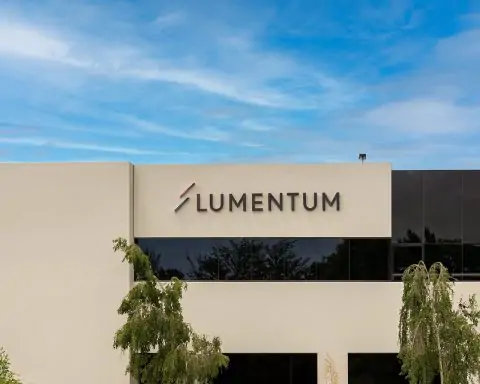- Explosive Rally: Tilray Brands (NASDAQ: TLRY) shares have surged around 300% since July 2025 amid renewed optimism for U.S. cannabis law reform [1]. The stock spiked over 60% in a single day (Sept 29, 2025), closing at $1.85, driven by a major political catalyst and a short squeeze [2] [3]. As of October 7, 2025, TLRY trades near ~$1.70, up from a 52-week low of just $0.35 [4] [5].
- Cannabis Reform Buzz: Political winds are fueling Tilray’s boom. A video from the U.S. administration touting CBD’s health benefits for seniors – effectively an endorsement by President Trump – ignited a sector-wide rally [6]. Multiple GOP senators (including Lisa Murkowski and Kevin Cramer) said moving marijuana from Schedule I to III “is totally a game changer”, signaling unprecedented bipartisan support for federal cannabis rescheduling [7] [8]. This momentum, plus talks of rescheduling, sparked a 10–20% jump across cannabis stocks and sent Tilray up 54% in hours [9].
- Short Squeeze & Volume Spike: Tilray’s rally was amplified by a classic short squeeze. Short interest was ~14.8% of float (over 161 million shares) [10]. When good news hit, short sellers rushing to cover positions added fuel, pushing volume to 8× the daily average (371 million shares on Sept 29) [11]. The stock’s 52-week high of $1.88 was attained during this frenzy [12].
- Financial Struggles Persist: Despite market euphoria, Tilray’s fundamentals remain shaky. In fiscal 2025 (year ended May), net revenue was $821 million (+4% YoY), but core cannabis sales actually fell 9% to $249 million [13]. Expansion into alcohol (craft beer, spirits) and wellness products padded the top line [14], yet profitability is elusive – the company lost $1.26 billion from continuing operations recently [15]. Last year’s operating loss was $174.7M (much improved from a $2.1B loss the prior year due to big impairment charges) [16]. Margins are thin: gross margin ~29% and EBIT margin a dismal -173% [17]. Bottom line: Tilray remains a money-losing business with minimal organic growth [18].
- Strengthening Balance Sheet: On the bright side, Tilray has bolstered its balance sheet. It holds about $256 million in cash, and management cut total debt by nearly $100M over the past year, achieving a modest debt-to-equity ratio ~0.20 [19] [20]. Liquidity is solid with a quick ratio ~1.4 and current ratio ~2.5 [21]. Insiders are showing confidence: CEO Irwin Simon and CFO Carl Merton bought shares on the open market in July 2025 (Simon added 165,000 shares at $0.61) [22] [23], a bullish signal that management sees value long-term [24].
- Strategic Moves: Tilray has been aggressively diversifying and expanding globally. It acquired multiple U.S. craft beer brands (becoming a top 5 craft brewer) and launched new product lines like an Oktoberfest-inspired seasonal brew lineup in fall 2025 [25] [26]. In cannabis, it closed the acquisition of HEXO Corp in 2023, boosting Canadian market share, and is expanding in Europe – especially Germany’s medical cannabis market, aiming to capitalize on Germany’s evolving medical and potential adult-use laws [27]. Tilray has inked partnerships, including sports tie-ins – for example, releasing limited-edition spirits and co-branded products with teams like the NFL’s Denver Broncos to extend its brand reach [28]. Cost-cutting is underway via “Project 420,” targeting $33M in savings (with $24M achieved so far) [29] [30].
- Industry Context – Challenges & Competitors: The cannabis sector remains highly volatile and oversaturated in Canada, where fierce competition has made profitability tough for all producers [31]. U.S. multi-state operators (MSOs) are growing revenue but constrained by federal illegality and lack of banking access. Tilray, as a Canadian firm with global ambitions, has tried to differentiate by diversifying into alcohol and overseas markets. Major Canadian peers like Canopy Growth and Aurora Cannabis have struggled with massive losses and restructuring, while U.S. rivals (Curaleaf, GTI, etc.) await regulatory relief. Federal reform is the key – a U.S. rescheduling to Schedule III (or legalization) could be transformative, easing tax burdens and allowing normal banking, potentially “unlocking billions in revenue” industry-wide [32]. Analysts estimate such a change could double Tilray’s revenue to ~$1.65 billion within 3 years [33]. However, reform hopes have repeatedly faltered in the past, and Safe Banking legislation has stalled multiple times [34], so optimism is cautious.
- Analyst Outlook: Wall Street sentiment on TLRY is mixed. The 12-month consensus price target is about $1.94, and the stock is rated a “Hold” on average [35]. That target implies only ~13% upside from current levels, as the recent rally already neared analysts’ expectations [36] [37]. Price forecasts range from a low of $1.00 to a high of $3.00 [38], reflecting uncertainty. Some analysts see huge upside if U.S. legalization advances (Forbes even mused about a “5× growth” scenario under ideal conditions), but others urge caution. The next catalyst is earnings on Oct 9, 2025, where Tilray is expected to report Q1 FY2026 revenue of ~$205 million with a net loss of ~$0.03 per share [39]. Investors will watch if Tilray can show improving trends – e.g. growth in its international cannabis revenue and progress on cost savings – to justify the stock’s recent explosion [40].
Recent News & Stock Performance (October 2025)
Tilray’s stock has been on a wild ride in early October 2025, propelled by a flurry of cannabis policy news. In the first week of October, TLRY jumped over 8% in one day (Oct 7) after an apparent breakthrough in U.S. marijuana reform sentiment [41] [42]. The trigger: several prominent Republican senators voiced unexpected support for easing federal cannabis laws, and former President Donald Trump – now in his second term – signaled openness to rescheduling marijuana. MarijuanaMoment reports that in late September, Trump shared a video touting CBD’s health benefits for seniors, and GOP Senators Lisa Murkowski (AK) said moving cannabis to Schedule III “is totally a game changer” while Kevin Cramer (ND) confirmed Trump “has said it… if he reschedules, that is a big deal” [43] [44]. Such rhetoric from traditionally resistant lawmakers shocked the market and “seemed to take a little step forward” the slow march toward U.S. marijuana legalization [45]. Cannabis stocks across the board rallied on the news, with Tilray notable as one of the biggest gainers, climbing over 8% that day [46].
This came on the heels of an even more dramatic move: on September 29, 2025, Tilray’s stock exploded by over 60% in a single session, an extraordinary jump that saw it close at $1.85 (from around $1.15 the prior day) [47]. That rally was spurred by reports that President Trump was considering reclassifying cannabis under federal law, treating it more like a regular controlled substance (Schedule III) rather than an illicit drug (Schedule I) [48] [49]. Such a rescheduling, effectively a form of de facto legalization, is something the industry has long craved. As one analyst noted, the market interpreted the political news “as a significant de-risking event for the U.S. regulatory landscape,” sending shockwaves through the cannabis sector with Tilray “emerging as a primary beneficiary.” [50] [51]
Notably, Tilray’s astonishing 60% single-day leap was not solely due to policy optimism – it was magnified by technical market dynamics. The stock had a relatively low price and very high short interest (~15% of the float) [52]. When the positive news hit, initial buying by bullish traders collided with panicked short sellers scrambling to cover their bets against the stock. This short squeeze created a feedback loop of demand, driving the price vertically higher in an “explosive” surge [53] [54]. Trading volume that day hit 371 million shares, more than 8 times Tilray’s average volume (~45 million) [55] – clear evidence of a frenzy of short-covering and speculative buying. By early October, Tilray’s 52-week trading range had been reset from a low of $0.35 all the way to a new high of $1.88 [56] [57], exemplifying the extreme volatility of cannabis stocks responding to policy rumors.
Going into October 8, 2025, Tilray’s stock was hovering around the mid-$1.70s per share. Even after pulling back slightly from the short-squeeze highs, shares are still up roughly 300% since the start of July [58]. For context, in summer 2025 TLRY was trading near penny-stock levels (under $0.50) amid gloomy sector sentiment. The rapid rise over the past few months has largely been driven by shifting sentiment around U.S. legalization prospects, not by major changes in Tilray’s current financial performance. As The Motley Fool observed, “excitement around possible cannabis reform in the U.S. has investors bullish” on Tilray’s growth potential [59]. This optimism, however, faces an imminent reality check with Tilray’s own fundamentals and upcoming earnings report.
Technical Analysis: A Volatile Uptrend with Caution Signs
From a technical standpoint, Tilray’s chart in recent months tells a tale of momentum trading and speculative fervor. The stock’s 50-day moving average is around $1.09 and rising, reflecting the sharp rally through late summer [60]. The 200-day moving average near $0.71 underscores how far Tilray has climbed from its early 2025 doldrums [61]. Traders who spotted the uptrend early (e.g. when TLRY broke above $1.00 in August) have been rewarded handsomely.
However, after such a parabolic move, technical analysts warn of potential pullbacks. Overbought conditions may be present; indeed, Tilray experienced a brief sell-off after peaking at ~$1.85, typical of a stock digesting a huge gain. The Motley Fool notes that historically, Tilray’s earnings releases often trigger sell-offs rather than rallies, given the company’s pattern of underwhelming results [62] [63]. The recent run-up could leave the stock “vulnerable for yet another steep sell-off” if the October 9 earnings disappoint, especially since shares have run far ahead of fundamentals [64] [65]. In other words, the risk of a “buy the rumor, sell the news” scenario is high – a well-known pattern in cannabis stocks where prices climb on legalization rumors only to fall back when the hard numbers (revenues, profits) fail to justify the hype.
One bullish technical indicator is the massive trading volume that accompanied Tilray’s late-September breakout. Such volume spikes on up-days can signal a true trend change, as new buyers (and shorts covering) establish higher price support. If Tilray can maintain support above former resistance levels (for example, the $1.20-$1.30 range which it broke out from), that would indicate the rally has some staying power. Short interest remains significant even after the squeeze, which means continued positive news or results could prolong the uptrend as more shorts are forced to cover. Conversely, any negative surprises could see momentum swiftly reverse, since momentum traders might exit en masse and short sellers reinitiate positions.
In summary, Tilray’s technical picture is bullish in the short term trend but with an extremely high volatility. Traders are advised to be cautious: as StocksToTrade’s lead analyst Tim Bohen puts it, “A good trade setup checks all the boxes – volume, trend, catalyst. Don’t trade if you’re missing pieces of the puzzle.” [66] For Tilray right now, the volume and trend are certainly there, and the catalyst is the looming earnings plus any regulatory developments. But if any of those factors turn negative, the puzzle falls apart. Risk management is key when dealing with a stock that can swing 20–50% in a single day.
Fundamental Analysis: Tilray’s Financial Health and Challenges
Revenues and Diversification: Tilray Brands today is a far more diversified company than it was during the Canadian cannabis boom of 2018. In addition to cultivating and selling cannabis products (flower, oils, medical cannabis) primarily in Canada and Europe, Tilray has expanded into complementary segments like alcoholic beverages and wellness products. This diversification has provided some revenue stability. In the fiscal year 2025 (ended May 31, 2025), Tilray reported net revenue of $821.3 million, a modest 4% increase year-over-year [67]. Notably, cannabis sales were actually down – the core cannabis segment saw a 9% decline, to $249 million [68]. The growth instead came from acquisitions and new business lines: its beer, spirits and wellness divisions. Over the past few years, Tilray acquired several craft breweries (SweetWater, Alpine, Green Flash, and in 2023 a portfolio of brands from AB InBev including Shock Top and Breckenridge Brewery) and even a bourbon whiskey brand, evolving into a consumer products conglomerate. These non-cannabis revenues helped offset declines in Canadian cannabis, which has been suffering from overcapacity and falling prices.
Tilray’s strategic rationale is to become a “global cannabis-lifestyle leader”, not just a marijuana farmer. CEO Irwin Simon has frequently emphasized the company’s vision beyond cannabis: from hemp food (Tilray owns Manitoba Harvest) to craft beer and even THC-infused beverages if legalization allows. The diversification makes Tilray less dependent on cannabis sales in any single market. For instance, without its alcohol segment, Tilray’s overall revenue would likely have declined in FY2025. Instead, alcoholic beverage sales (from its Breckenridge, SweetWater and Montauk breweries, etc.) and wellness products gave it a small overall growth. This strategy has made the company more resilient on the top line – as one analyst wryly noted, without those acquisitions “it may have had an even more difficult time attracting growth investors.” [69]
Profitability Issues: While Tilray has built a larger revenue base, it continues to hemorrhage money. The company has never achieved an annual profit since its inception. In FY2025, Tilray actually recorded a small positive EPS of $0.02 for Q4 (thanks to one-time adjustments) [70], but this is not indicative of true profitability – in fact, excluding accounting quirks, the business remains deeply in the red. Tilray’s operating loss in FY2025 was $174.7 million [71]. On a net income basis, Tilray showed a staggering $1.27 billion loss from continuing operations [72] – this huge figure includes impairment charges (write-downs of goodwill and intangibles) related to past acquisitions. The prior year, Tilray had an even larger $2+ billion net loss due to massive write-offs as the company “right-sized” the goodwill on its balance sheet [73].
Even looking forward, analysts do not foresee quick improvement: consensus estimates project roughly $0 in EPS for the current and next fiscal year (essentially breakeven, implying continued small losses) [74]. Gross margins are thin at around 29% [75], reflecting low pricing power in cannabis and beer. Tilray’s EBIT margin was -173% as of recent reports [76], meaning it lost nearly $1.73 for every $1 of revenue – an unsustainable situation. To be fair, that EBIT margin was skewed by non-cash write-offs; however, even on an adjusted basis the company is not profitable.
Tilray has launched cost-cutting initiatives to stem the bleeding. The “Project 420” restructuring program (the name a cheeky nod to cannabis culture) targets $33 million in annual cost savings, focusing on optimizing its cannabis operations and integrating acquisitions. As of the latest update, management claims to have realized $24 million in annualized savings toward that goal [77]. Additionally, Tilray has closed some redundant facilities in Canada and streamlined its product portfolio to focus on stronger brands. Still, operating expenses remain high relative to gross profit, and achieving profitability will likely require either a significant increase in high-margin revenue (for example, if U.S. federal legalization opens a lucrative new market) or further cost reductions (or both).
Balance Sheet and Capital: A crucial aspect for a company burning cash is how long it can survive. Here, Tilray has taken steps to ensure it can weather the storm. The company reported $256 million in cash and marketable securities on hand [78]. It also reduced debt by nearly $100 million in the past year, bringing total debt down and yielding a debt-to-equity ratio of ~0.20 [79] [80]. For a context, many cannabis peers took on large debts during expansion and now find themselves highly leveraged; Tilray’s moderate leverage gives it some breathing room. Key liquidity ratios are healthy: current ratio ~2.5 and quick ratio ~1.5 [81]. This means Tilray has more than double the short-term assets needed to cover short-term liabilities, a positive sign of liquidity.
Tilray has also been opportunistic in issuing equity when its stock spikes. In July and August 2023, for instance, it sold shares at-the-market to raise capital (diluting shareholders but bolstering cash reserves). With the recent stock price surge in 2025, it wouldn’t be surprising if the company considers another capital raise to pad its coffers, though no announcement has been made. The balance sheet shows a large goodwill and intangibles figure (~$774 million) [82], the result of its many acquisitions; there is a risk of further impairment if those acquired businesses don’t perform.
One confidence-inspiring sign is insider buying. In late July 2025, CEO Irwin D. Simon purchased 165,000 shares at an average cost of $0.61 [83] [84], increasing his stake by about 4%. CFO Carl Merton also bought shares. Such insider purchases are often interpreted as a signal that management believes the stock is undervalued. Indeed, MarketBeat reported these insider moves as “strong internal confidence in the company’s long-term strategy and fundamental valuation” [85] [86]. It’s worth noting Simon has a history of making strategic buys on weakness; his July buys, in hindsight, came near the stock’s multi-year low. For regular investors, insider confidence doesn’t guarantee success, but it aligns management’s interests with shareholders.
Bottom Line: Fundamentally, Tilray is still a turnaround work-in-progress. It has scale – over $800M in annual revenue, operations across continents – but it has yet to prove it can translate that into sustainable profits. The diversification into beverages and hemp is a double-edged sword: it adds revenue streams but also means Tilray is juggling very different businesses (cannabis cultivation vs. beer brewing) with different dynamics. In cannabis, Tilray’s fortunes may ultimately rise with industry tides (e.g., U.S. legalization or European expansion). In beer, Tilray must compete with other craft brewers and macro brewers – a tough market but one where it has made surprising inroads (for example, its SweetWater brewery beers are now distributed nationally in the US). Investors should keep an eye on Adjusted EBITDA and cash flow in upcoming results as key indicators of whether Tilray is moving toward a sustainable business model or will need further restructuring.
Strategic Developments and Global Expansion
Tilray’s management has been actively charting a path for growth through strategic deals, market expansion, and product innovation. Here are some of the most relevant developments:
- U.S. Alcohol and Beverage Acquisitions: In an effort to diversify away from the oversupplied Canadian cannabis market, Tilray has acquired a portfolio of beverage companies. Notably, in late 2020 it acquired SweetWater Brewing Company (a popular craft brewery in Atlanta), and in late 2021 it bought Breckenridge Distillery (a craft spirits producer). In 2023, Tilray made headlines by purchasing eight beer and beverage brands from AB InBev, including Shock Top, Redhook, and Blue Point, instantly making Tilray one of the largest craft beer players in the U.S. market. This was a bold move to leverage synergies between cannabis and lifestyle alcohol – for example, cross-marketing to a similar demographic. These acquisitions contributed strongly to the ~19% revenue growth seen in Tilray’s U.S. beverage alcohol segment in FY2025 [87] [88]. Just recently, in September 2025, Tilray Beverages unveiled a new fall seasonal lineup of craft beers (Oktoberfest-themed brews across its portfolio) to capitalize on its expanded brewing capacity [89]. This indicates Tilray is actively innovating in its alcohol segment to drive organic growth.
- Canada and Cannabis Market Share: Domestically in Canada, Tilray solidified its position by acquiring HEXO Corp. in June 2023 (a former rival cannabis producer). This deal increased Tilray’s Canadian market share (the company claims to be #1 in the Canadian recreational cannabis market post-merger). It also added HEXO’s brands (like Redecan) to Tilray’s portfolio and presumably some cost synergy opportunities (removing duplicate facilities, etc.). The Canadian market has been challenging due to price compression and an excess of licensed producers, so scale is important. Tilray’s bet is that being among the last giants standing will pay off when the market eventually consolidates. The HEXO integration was part of why cannabis segment sales dipped (as they rationalized product lines), but should yield cost savings.
- International Growth – Europe Focus: Tilray is one of the few cannabis companies with a significant international footprint. It operates a large EU GMP-certified cultivation facility in Portugal, which serves medical cannabis markets across Europe. Germany is Tilray’s most important international market – the company has been supplying medical cannabis there for years and has a strong distribution network (including through Tilray’s subsidiary CC Pharma, a German pharmaceutical distributor acquired by Aphria in 2019). Germany is on the cusp of broader legalization (the German government has been working on a law to allow adult-use via social clubs and possibly regional pilot programs). Tilray has been positioning to capitalize: in 2022 it acquired assets of two German cannabis firms (Aphria RX and another distributor). In October 2025, Yahoo Finance reported that Tilray’s aggressive expansion into Germany’s medical cannabis scene signals a drive to claim more of the global spotlight [90]. This likely refers to Tilray expanding supply agreements with German pharmacies or potentially investing in local cultivation to meet demand. With Europe potentially representing a huge market (Germany alone could be multi-billion if fully legalized), Tilray’s early mover advantage there is a strategic edge over U.S.-only operators. It’s also worth noting Tilray has a presence in other countries: it has exported medical cannabis to countries like Australia, the UK, and Israel, and it owns a stake in a leading cannabis producer in Tilray Israel (formerly known as Canndoc).
- Product Innovation and Brands: Tilray has been creative in leveraging its brand portfolio. For example, it launched CBD-infused wellness products via its Manitoba Harvest brand when rules allowed. It also has hemp food products (hemp hearts, protein powder) that are sold in mainstream stores. On the THC side, Tilray has introduced new product formats like beverages and edibles in Canada as regulations evolved. A notable marketing move was partnering with sports teams to create co-branded products – the mention of a Denver Broncos partnership [91] likely alludes to a limited-edition beer or spirit launched by Tilray around the time the NFL season started, tapping into fan enthusiasm. (Indeed, in 2022, SweetWater Brewing released a commemorative beer for the University of Georgia championship; similar concept might be at play with pro teams).
- Regulatory Navigation: Strategically, Tilray is positioning itself to quickly enter the U.S. THC market if/when federal laws permit. While Canadian companies currently cannot own U.S. cannabis plant-touching assets, Tilray’s approach has been to accumulate U.S. infrastructure (beer breweries, distribution channels, consumer brands) that could be leveraged for cannabis. For instance, one could imagine in a legalized future, Tilray’s SweetWater facilities might brew THC-infused beverages, or its alcohol distribution could also distribute cannabis drinks. Tilray has also been an advocate for regulatory reform: CEO Irwin Simon frequently speaks on CNBC and other outlets about the need for U.S. legalization and has indicated Tilray would be ready to invest or acquire in the U.S. cannabis space the moment it’s allowed.
- M&A and Future Plans: The company’s M&A spree may not be over. Rumors periodically circulate that Tilray could target other distressed cannabis companies or brands. Given Tilray’s relatively large market cap (around $1.8 billion after the rally [92]) and access to NASDAQ listing, it could use its stock as currency to consolidate more assets. However, with its own stock price so low (under $2), large deals might be dilutive. Management has instead hinted at focusing on integrating what they have and driving toward positive adjusted EBITDA within the next year. Achieving positive cash flow would be a significant milestone that could set Tilray apart from many peers that are struggling to survive.
In summary, Tilray’s strategic direction is clear: diversify for stability, expand globally, and prepare for U.S. legalization. It is trying to be everywhere – Canada, U.S. (in non-THC ways for now), Europe – to maximize opportunities. The strategy entails high execution risk, but if successful, could make Tilray a long-term industry leader. If it fails (for example, if U.S. legalization takes many years or Canadian pricing stays weak), Tilray could face tough choices. So far, investors seem encouraged by the moves, especially the alcohol acquisitions that provide near-term revenue. The next big strategic lever will be how Tilray reacts if the U.S. cracks open: perhaps through partnerships or a merger with a U.S. MSO. Until then, the focus is on getting leaner and stronger where it can.
Cannabis Industry Outlook and Tilray’s Competitive Position
The broader cannabis industry context is crucial in evaluating Tilray’s prospects. Global cannabis is a tale of two markets: the stagnant legal Canadian market and the tantalizing potential of the much larger U.S. and international markets. Tilray straddles both.
In Canada, five years after recreational legalization, the market has become ultra-competitive and oversupplied. Hundreds of licensed producers fought for shelf space, driving prices down. Even the once market leaders like Canopy Growth Corp. have seen their market caps and revenues shrink dramatically. As noted, Tilray’s cannabis revenue in Canada declined 9% last year [93] – a reflection of these headwinds. Many smaller Canadian producers have gone bankrupt or been acquired. Tilray’s advantage is scale and diversification, but it still must contend with slim margins in Canadian retail. Competitors like Aurora Cannabis and Cronos Group have also pivoted to cutting costs and finding niches (Aurora focusing on medical exports, Cronos on cannabinoids research and its Altria partnership). Tilray, thanks to Aphria (which it merged with in 2021), has one of the better cost structures in Canadian cultivation, but making a profit in Canada alone is difficult for any operator now.
Meanwhile, the United States remains largely off-limits for Tilray’s core business due to federal law. However, it’s the prize everyone is eyeing. U.S. cannabis sales (state-legal) already exceed $25 billion annually and are growing. U.S. cannabis companies (the MSOs like Curaleaf, Trulieve, Green Thumb Industries, Cresco Labs, etc.) dominate those markets but trade on secondary exchanges due to federal illegality. Tilray’s play is to be ready to jump in when federal reform happens. The recent developments – Republicans warming to rescheduling, Trump considering it – feed into a narrative that federal legalization or at least significant reform could happen in the next few years. If cannabis is rescheduled to Schedule III, it wouldn’t fully legalize it but would remove the most onerous federal restrictions (like 280E tax, which currently eats up cannabis companies’ profits, and potentially allow standard banking services). As analysts in the cannabis space have pointed out, rescheduling alone “could unlock billions in revenue” by easing banking and tax burdens, and could double Tilray’s revenue within a few years by opening new markets and boosting consumer access [94] [95].
However, many industry watchers caution that we’ve seen this movie before: every election cycle or political tease has led to speculation, yet concrete federal action has lagged. “Cannabis investors have heard for years about how reform and legalization are coming soon in the U.S., and yet there’s been virtually no progress,” one Motley Fool analyst laments [96]. Even relatively modest legislation like the SAFE Banking Act (which would allow banks to work with cannabis businesses) has repeatedly stalled in Congress due to political disagreements [97]. This cycle of hope and disappointment has burned investors in the past. That context is important: Tilray’s recent rally is predicated on the belief that this time is different – that high-profile Republican support and a President with a declared intent to reschedule will finally break the logjam.
Comparatively, Tilray’s competitors fall into a few categories:
- Canadian Peers (NASDAQ/TSX listed):Canopy Growth (CGC), Cronos Group (CRON), Aurora Cannabis (ACB), Sundial (SNDL), etc. These companies all struggled mightily from 2019-2023; Canopy is in the midst of a restructuring (spinning off its U.S. assets into a separate entity), Aurora pivoted to medical and has done multiple reverse stock splits to stay listed, Cronos has cash from Altria but minimal revenue growth. None have diversified into non-cannabis as much as Tilray. In some sense, Tilray stands out for having hedged its bets with beer and international ventures. If the Canadian market remains tough, Tilray can lean on other segments – an option peers lack. But if Canadian or U.S. laws change favorably, all boats could rise.
- U.S. MSOs (not directly competing yet, but potentially future rivals): If legalization happens, companies like Curaleaf, Green Thumb, Trulieve, Cresco, Verano are already running profitable operations in states. They have significant consumer bases and brands in the U.S. Tilray might try to acquire or partner with one of them to get an instant foothold (indeed, Tilray already owns a small stake in U.S. MSO MedMen’s convertible notes, which could one day give it an equity stake if allowed). The competitive landscape in the U.S. would be intense – existing MSOs vs. Canadian entrants vs. alcohol/tobacco giants that might jump in (like how Constellation Brands invested in Canopy, or Altria in Cronos). Tilray’s brand portfolio and global scale could be an asset in such a scenario, but it would be a new playing field.
- Global Players: In Europe, Tilray competes with a mix of local operators and other Canadian exporters. For example, Aurora and Canopy also export to Germany. But European medical markets are still small and highly regulated. Tilray’s early move in Portugal and Germany gives it an edge; it reportedly had around 20%+ market share in Germany’s medical cannabis as of 2021. If Germany legalizes recreationally, expect competition from domestic German producers (some German pharma companies are entering the space) as well as Canadian/Intl exporters. Tilray’s strategy of having a German distribution arm (CC Pharma) is a competitive advantage for reaching pharmacies.
Overall, the cannabis industry is in flux in late 2025. The reform momentum in the U.S. is the biggest x-factor. If actual policy change happens (e.g. Congress passes a law or the DEA follows through on rescheduling recommendation), it could lift the entire sector out of its bear market. Tilray, being one of the most well-known and heavily traded cannabis stocks on NASDAQ, could benefit disproportionately as U.S. investors pile back into the space. That helps explain why TLRY soared more than many peers on the recent news. But if reform disappoints (say, political fights delay any change into 2026 or beyond), Tilray’s stock could deflate once again, and focus would return to company-specific execution.
As one MarketBeat analysis framed it, Tilray’s 60% spike on political news begs the question: was it a fleeting hype-driven event, or the market finally recognizing real value in Tilray’s strategy? [98]. The answer likely lies in whether the external catalyst (legalization progress) is followed by internal performance improvements. Tilray’s ability to demonstrate that it can thrive even in the current environment – by growing revenue, cutting losses, and perhaps achieving positive EBITDA – will determine if it can outlast competitors and be a long-term winner.
Expert Commentary and Analyst Views
Opinions on Tilray stock are sharply divided, reflecting the high-risk, high-reward nature of cannabis investments. Here’s a look at what some analysts and financial commentators are saying:
- The Bulls – Long-Term Optimism: Some experts argue that Tilray’s recent rally might be more than just hype, pointing to concrete improvements in the company’s operations and the possibility of U.S. reform as game-changing. A MarketBeat analyst highlighted that despite the speculative catalyst, “it drew significant attention and much-needed positive sentiment to a company with strong fundamentals, a solid cash position, and a technical setup ripe for continued upward momentum.” [99] This view suggests that Tilray was undervalued prior to the rally and that the news acted as a spark to “finally start to recognize a deeper value proposition” being built within Tilray [100] [101]. The bullish case emphasizes Tilray’s fortified balance sheet and diversified business. For instance, international cannabis revenue grew 19% last year and global cannabis gross margins expanded by 700 basis points, while the U.S. beverage segment also grew 19% [102] [103]. This indicates Tilray’s moves are yielding fruit. Moreover, the insider buying by the CEO/CFO is seen as a “powerful signal” of management’s confidence in long-term value [104]. Bulls also note that with $256M in cash and only 0.2 debt/equity, Tilray is better positioned financially than many peers to weather storms [105] [106]. If federal rescheduling happens, bulls believe Tilray could rapidly expand into the U.S. and leverage its consumer brands to capture significant market share. The Forbes analysis that floated a “path to 5× growth” likely hinges on such a scenario – e.g. federal legalization allowing Tilray access to a market perhaps 10 times the size of Canada, along with the company’s diversified portfolio driving growth. In short, the bullish commentary sees Tilray as a turnaround that is aligning itself perfectly for the next leg up if macro conditions (i.e. laws) improve.
- The Bears – Skepticism and “Show Me” Attitude: On the other side, many analysts urge caution, calling Tilray’s surge a speculative frenzy divorced from reality. The Motley Fool’s analysts have been particularly vocal in skepticism. One Fool commentary bluntly stated that Tilray’s stock “isn’t worth gambling on” ahead of earnings, noting that the company’s fundamentals have been weak and that reform hype has repeatedly led to disappointment [107] [108]. “Cannabis investors have heard for years about how… legalization [is] coming soon… and yet nothing… I’ve seen this cycle many times,” writes David Jagielski, warning that when reality sets in, “so too does the stock” [109]. He points out that even after recent gains, Tilray shares are down over 65% in the past five years, a reminder of the value destruction long-term holders have experienced [110]. The fundamental concerns include Tilray’s lack of profit and slowing cannabis sales, and the fact that much of its revenue growth comes from acquisitions rather than organic demand. The Fool notes that “all those acquisitions haven’t been paying off on the bottom line… in short, this is a money-losing business with minimal organic growth.” [111] [112] The bear case also casts doubt on the likelihood of quick U.S. reform: even if rescheduling to Schedule III occurs, marijuana would still not be fully legal or interstate commerce allowed, so Canadian companies might not immediately benefit as much as some think. Furthermore, competition in any newly opened U.S. market will be fierce, and Tilray would be going up against entrenched American operators. As a result, bearish analysts often have hold or sell ratings on TLRY. Many have low price targets (close to $1) given the uncertainty of achieving profitability. Their advice tends to be that only risk-tolerant investors should consider Tilray, and even then, position sizing should be small.
- In-Between – Cautious Optimism: Some experts take a middle ground: acknowledging Tilray’s improvements but needing evidence of sustained performance. For example, MarketBeat’s preview for earnings on Oct 9 notes that “the newfound bullish momentum will soon face its first major test” with the quarterly results [113]. They advise to watch for top-line growth in international cannabis, progress on cost savings, and whether Tilray reaffirms its guidance (e.g. FY2026 adjusted EBITDA of $62–72M) [114]. If Tilray can hit those metrics, it might “force a re-evaluation from Wall Street” and support the higher share price [115]. If not, the stock could fall back. This pragmatic view essentially says: the ingredients for a successful turnaround are there (diversification, cost cuts, potential legal catalysts), but Tilray must execute. It’s up to the company to justify the market’s optimism with real results in coming quarters. Until then, a “Hold” rating is typical, as reflected by the consensus.
In terms of direct quotes from experts:
- Eric Volkman of The Motley Fool commented on the recent policy news saying, “Investors in Tilray and its peers are clearly happy with this momentum,” referring to the political momentum building behind reform [116]. This captures the sentiment driving the rally – it’s as much about psychology and hope as anything concrete.
- Tim Bohen of StocksToTrade emphasized trading strategy with Tilray’s volatility: “Tilray stands as a possibly risky yet enticing player in the cannabis sector… [Traders] must tread carefully, balancing Tilray’s volatile stock trends against strategic opportunities [amid] anticipation of regulatory pivots,” basically advising caution even as one finds the story intriguing [117].
- An especially vivid take comes from The Motley Fool’s bear case: “Tilray is a highly speculative stock, and it has effectively been a way for investors to bet on whether marijuana reform is likely. When hopes are high, shares of Tilray go up. But when reality comes crashing down, so too does the stock,” the author wrote, saying he’d “stay far away” at this point [118]. This underscores the idea that Tilray is trading more on policy hope than on business fundamentals right now.
- Conversely, MarketBeat’s analysis offered a positive spin: “Despite the speculative nature of the [rescheduling] catalyst, it effectively drew significant attention and much-needed positive sentiment to a company with strong fundamentals… and a technical setup ripe for continued upward momentum,” suggesting that maybe the market was overlooking Tilray’s progress until the news spotlight hit [119].
These contrasting viewpoints show why Tilray remains a controversial stock. It has a passionate investor base that believes in the cannabis sector’s long-term potential (and Tilray’s positioning in it), and it has skeptics who focus on the hard numbers that continue to show losses and challenges. Both sides agree on one thing: the next few months will be critical. The combination of upcoming financial results and any movement (or lack thereof) on U.S. cannabis policy could determine whether TLRY continues to climb or gives back a chunk of its gains.
Forecasts and Projections for TLRY Stock
Looking ahead, what can investors expect for Tilray’s stock? Price forecasts are inherently difficult for such a volatile equity, but we can glean insight from analysts’ targets and the scenarios that could play out:
Wall Street Price Targets: According to recent data, the average 12-month price target for TLRY is around $1.94 per share [120]. This is only slightly above the current price (~$1.70-$1.80 range), indicating that much of the upside that analysts saw has been realized by the latest rally. The range of targets is wide – with some as high as $3.00 and some as low as $1.00 [121]. Typically, at the low end, analysts who are very bearish might assume Tilray will need to dilute shareholders or that cannabis reforms won’t materialize (making it hard for the stock to justify even its current value). At the high end ($3 target), analysts are likely assuming a successful execution of Tilray’s strategy plus significant positive catalysts (perhaps a combination of strong earnings improvement and further movement on U.S. legalization).
Earnings Expectations: In the near term, the focus is on Tilray’s earnings announcement on October 9, 2025. Analysts expect Q1 FY2026 revenue of about $205–206 million and a net loss of $0.03 per share [122]. If Tilray manages to beat these estimates – for example, showing smaller losses or higher revenue – it could boost confidence and potentially prompt upgrades or higher targets. Notably, last quarter Tilray surprised by reporting a small positive EPS of $0.02 (due to one-time gains) when a loss was expected [123]; however, they missed on revenue ($224M actual vs $250M expected) [124]. For the stock to gain further, Tilray ideally would show accelerating growth (especially in cannabis sales, perhaps thanks to international markets or new products) and progress toward breakeven (maybe guiding that they will achieve positive Adjusted EBITDA within FY2026). Management’s guidance, if any, will be closely parsed. The MarketBeat article mentioned the company’s full-year adjusted EBITDA guidance of $62–$72 million (which presumably is for FY2026) [125]. Hitting that would mark a big turnaround (compared to roughly -$34M adjusted EBITDA in FY2025, if we back into it). If management reaffirms or raises such guidance, it could underpin higher stock valuations.
Catalyst Projections: A lot of TLRY’s fate lies with external catalysts:
- The DEA’s decision on cannabis rescheduling: If by later in 2025 or early 2026 the DEA (under Trump’s direction) moves cannabis to Schedule III, it could be a monumental shift. While that wouldn’t immediately allow recreational sales federally, it would likely allow cannabis companies to uplist, get bank loans, and not pay punitive taxes – effectively boosting profitability prospects. Tilray’s stock (and others) would likely react very positively. Some analysts might then price in Tilray’s potential entry into U.S. THC markets, raising their projections.
- SAFE Banking or other legislation: Passage of the SAFE Banking Act (allowing banking for cannabis) is a realistic possibility even if full legalization stalls. If it passes the Senate (it already passed a committee in Sept 2023 in real timeline; perhaps by 2025 it’s closer), that could bump sentiment further and perhaps give another leg up to stocks like TLRY as risk-averse investors become more comfortable with the sector.
- Industry consolidation or M&A: Tilray itself might make news – positive or negative – with any big moves. For example, if Tilray were to announce a deal to partner with a U.S. company contingent on legalization, or if they acquired another consumer brand, analysts would update models accordingly. If the deal is seen as synergistic, targets could rise; if it’s seen as dilutive or too risky, targets could fall.
- Macro market conditions: One should not ignore that TLRY is a high-beta stock (beta ~1.98) [126], meaning it swings more than the market. If the overall market or the NASDAQ is strong, speculative stocks like TLRY often do better. Conversely, in a risk-off environment, TLRY could drop regardless of company-specific news. Projections assume some baseline of market stability.
Bull Case Scenario: In an optimistic scenario, by mid-2026 Tilray could be benefiting from:
– U.S. rescheduling to Schedule III, allowing it to potentially start CBD or even low-THC product lines nationally and to access institutional investors/banks.
– German recreational cannabis pilot programs underway, with Tilray supplying product, boosting international revenue significantly.
– The beer business growing by double-digits as Tilray’s brands expand distribution and perhaps introduce cannabis-infused beverages in Canada or CBD beverages in the U.S.
– Tilray achieving positive adjusted EBITDA and moving toward actual net profitability, proving the success of its cost cuts and synergies.
In such a case, analysts might project robust growth (20%+ revenue growth) and improving margins, which could justify stock valuations at, say, 3-5 times sales. If Tilray were to hit $1 billion revenue with break-even net income, a 3x price-to-sales could imply a market cap of $3B (vs ~$1.8B now). That could correspond to a stock price in the mid-$2 range or higher. Some optimists might even see TLRY returning to the high single digits in a true legalization scenario, but that likely requires a fundamental transformation (e.g., entering the U.S. market directly through acquisition of an MSO or organic expansion).
Bear Case Scenario: In a pessimistic scenario, none of the hoped-for catalysts pan out in the near term:
– The rescheduling talk gets bogged down or a new political conflict delays it indefinitely.
– Tilray’s earnings continue to be lackluster, with flat or declining revenues and ongoing losses, raising the need for dilutive financing.
– The cannabis market in Canada worsens, and the international expansion fails to gain traction due to regulatory delays (e.g., Germany moves slowly).
In this case, Tilray’s stock could easily retrace a lot of its gains. With no growth and continued losses, stocks like TLRY can trade at very low valuations (sometimes under 1x sales). If the market cap went back to ~$1B or less, the stock would be under $1 again. Indeed, the low analyst target of $1.00 implies a scenario where either dilution or declines cut the value roughly in half from here.
One question is also the short-term trading vs long-term investing dynamic. In the near term, traders will be eyeing whether TLRY can break past its recent high around $1.85-$1.88. If it does on volume, momentum could carry it to $2+ quickly (there may even be stop orders or technical breakout buyers at $2 which is a psychological level). On the downside, if TLRY falls below ~$1.20 (the area of support from pre-surge levels), it could signal the end of this rally and possibly a drift back toward $1.00.
It’s instructive to recall that back in 2018, Tilray famously reached an all-time high of $300 during a speculative bubble – a stark reminder of how disconnected from fundamentals cannabis stock prices can become in mania phases. We are nowhere near that now, and the company has vastly more shares outstanding, so such extremes are unlikely. But it demonstrates that volatility is in this stock’s DNA.
In conclusion, the forecast for TLRY is heavily contingent on external events. Most analysts aren’t forecasting huge gains from here without something material changing. They have a “show me” attitude – wanting Tilray to prove it can improve financials and also waiting to see if U.S. reform truly advances. The average projection of ~$1.94 [127] suggests a modest upside, basically implying the stock is fairly valued for now relative to known information. For Tilray to exceed that, it will likely need either a positive surprise in earnings or a further political catalyst (or both). Investors should be prepared for continued volatility. As StocksToTrade summed up: Tilray is a “risky yet enticing” play in an evolving regulatory landscape, and traders must balance the potential rewards with the very real risks [128].
Sources:
- Yahoo Finance / Motley Fool – “Should You Buy Tilray Brands Stock Before Oct. 9?” (David Jagielski, Oct 4, 2025) [129] [130] [131] [132].
- The Motley Fool via Nasdaq – “Why Tilray Stock Leaped 8% Higher on Tuesday” (Eric Volkman, Oct 7, 2025) [133] [134].
- StocksToTrade News – “Why Tilray Stock Soared on Trump Endorsement?” (Tim Bohen, Oct 7, 2025) [135] [136] [137].
- AInvest.com – “Sector Rotation in 2025: Tilray, Alibaba, Novo Nordisk” (Philip Carter, Sep 30, 2025) [138] [139].
- MarketBeat – “Tilray Stock Explodes 60% on Political Catalyst – Hype or Real?” (Original analysis, Oct 7, 2025) [140] [141] [142] [143] [144] [145] [146].
- Marijuana Moment – “Trump Rescheduling Marijuana Would Be a ‘Game Changer,’ GOP Senators Say” (Kyle Jaeger, Oct 7, 2025) [147] [148].
- MarketBeat – “Tilray Brands (TLRY) Projected to Post Earnings on Oct 9, 2025” (Oct 2, 2025) [149] [150] [151] [152].
- Globe Newswire – “Tilray Beverages Unveils New Fall Seasonal Craft Brews (Oktoberfest Lineup)” (Tilray PR, Sep 23, 2025) [153].
- Additional analysis from The Motley Fool, MarketBeat, and StocksToTrade as cited above [154] [155] [156], providing context on stock performance, financial results, and trading perspectives.
References
1. www.nasdaq.com, 2. www.marketbeat.com, 3. www.marketbeat.com, 4. www.marketbeat.com, 5. www.marketbeat.com, 6. www.marketbeat.com, 7. www.marijuanamoment.net, 8. www.marijuanamoment.net, 9. stockstotrade.com, 10. www.marketbeat.com, 11. www.marketbeat.com, 12. www.marketbeat.com, 13. www.nasdaq.com, 14. www.nasdaq.com, 15. stockstotrade.com, 16. www.nasdaq.com, 17. stockstotrade.com, 18. www.nasdaq.com, 19. www.marketbeat.com, 20. www.marketbeat.com, 21. stockstotrade.com, 22. www.marketbeat.com, 23. www.marketbeat.com, 24. www.marketbeat.com, 25. www.globenewswire.com, 26. www.stocktitan.net, 27. finance.yahoo.com, 28. www.ainvest.com, 29. www.marketbeat.com, 30. www.marketbeat.com, 31. www.nasdaq.com, 32. www.ainvest.com, 33. www.ainvest.com, 34. www.nasdaq.com, 35. www.marketbeat.com, 36. www.marketbeat.com, 37. www.marketbeat.com, 38. www.marketbeat.com, 39. www.marketbeat.com, 40. www.marketbeat.com, 41. www.nasdaq.com, 42. www.nasdaq.com, 43. www.marijuanamoment.net, 44. www.marijuanamoment.net, 45. www.nasdaq.com, 46. www.nasdaq.com, 47. www.marketbeat.com, 48. www.nasdaq.com, 49. www.nasdaq.com, 50. www.marketbeat.com, 51. www.marketbeat.com, 52. www.marketbeat.com, 53. www.marketbeat.com, 54. www.marketbeat.com, 55. www.marketbeat.com, 56. www.marketbeat.com, 57. www.marketbeat.com, 58. www.nasdaq.com, 59. www.nasdaq.com, 60. www.marketbeat.com, 61. www.marketbeat.com, 62. www.nasdaq.com, 63. www.nasdaq.com, 64. www.nasdaq.com, 65. www.nasdaq.com, 66. stockstotrade.com, 67. www.nasdaq.com, 68. www.nasdaq.com, 69. www.nasdaq.com, 70. www.marketbeat.com, 71. www.nasdaq.com, 72. stockstotrade.com, 73. www.nasdaq.com, 74. www.marketbeat.com, 75. stockstotrade.com, 76. stockstotrade.com, 77. www.marketbeat.com, 78. www.marketbeat.com, 79. www.marketbeat.com, 80. www.marketbeat.com, 81. stockstotrade.com, 82. stockstotrade.com, 83. www.marketbeat.com, 84. www.marketbeat.com, 85. www.marketbeat.com, 86. www.marketbeat.com, 87. www.marketbeat.com, 88. www.marketbeat.com, 89. www.globenewswire.com, 90. finance.yahoo.com, 91. www.ainvest.com, 92. www.marketbeat.com, 93. www.nasdaq.com, 94. www.ainvest.com, 95. www.ainvest.com, 96. www.nasdaq.com, 97. www.nasdaq.com, 98. www.marketbeat.com, 99. www.marketbeat.com, 100. www.marketbeat.com, 101. www.marketbeat.com, 102. www.marketbeat.com, 103. www.marketbeat.com, 104. www.marketbeat.com, 105. www.marketbeat.com, 106. www.marketbeat.com, 107. www.nasdaq.com, 108. www.nasdaq.com, 109. www.nasdaq.com, 110. www.nasdaq.com, 111. www.nasdaq.com, 112. www.nasdaq.com, 113. www.marketbeat.com, 114. www.marketbeat.com, 115. www.marketbeat.com, 116. www.nasdaq.com, 117. stockstotrade.com, 118. www.nasdaq.com, 119. www.marketbeat.com, 120. www.marketbeat.com, 121. www.marketbeat.com, 122. www.marketbeat.com, 123. www.marketbeat.com, 124. www.marketbeat.com, 125. www.marketbeat.com, 126. www.marketbeat.com, 127. www.marketbeat.com, 128. stockstotrade.com, 129. www.nasdaq.com, 130. www.nasdaq.com, 131. www.nasdaq.com, 132. www.nasdaq.com, 133. www.nasdaq.com, 134. www.nasdaq.com, 135. stockstotrade.com, 136. stockstotrade.com, 137. stockstotrade.com, 138. www.ainvest.com, 139. www.ainvest.com, 140. www.marketbeat.com, 141. www.marketbeat.com, 142. www.marketbeat.com, 143. www.marketbeat.com, 144. www.marketbeat.com, 145. www.marketbeat.com, 146. www.marketbeat.com, 147. www.marijuanamoment.net, 148. www.marijuanamoment.net, 149. www.marketbeat.com, 150. www.marketbeat.com, 151. www.marketbeat.com, 152. www.marketbeat.com, 153. www.globenewswire.com, 154. www.nasdaq.com, 155. www.nasdaq.com, 156. stockstotrade.com










